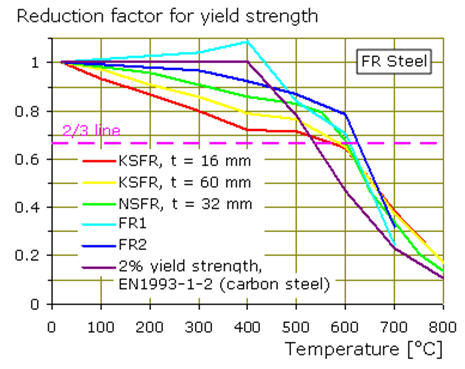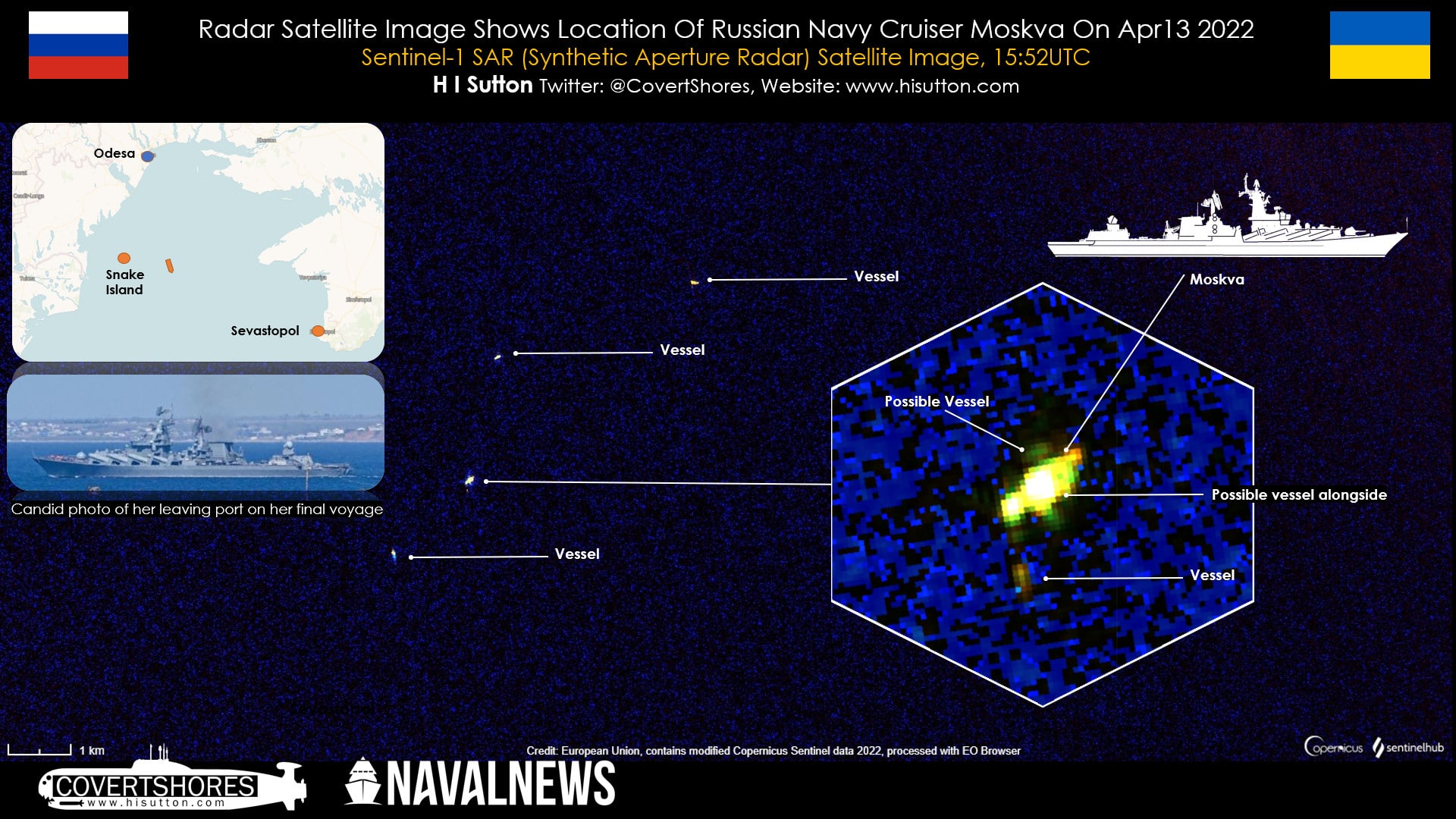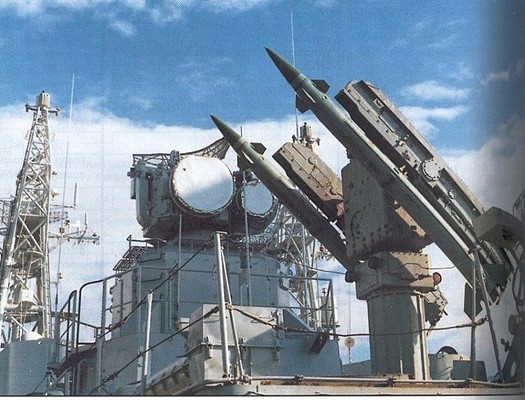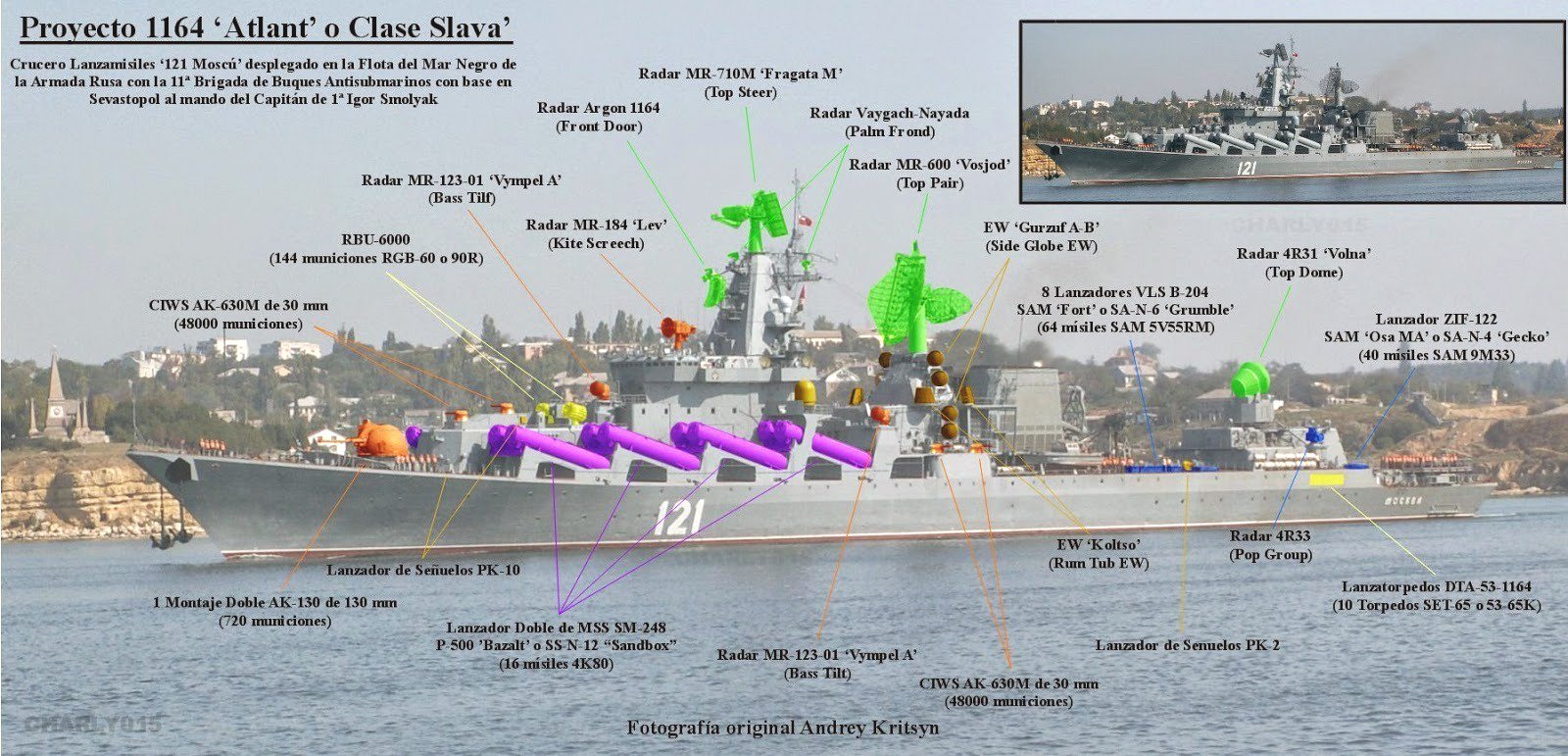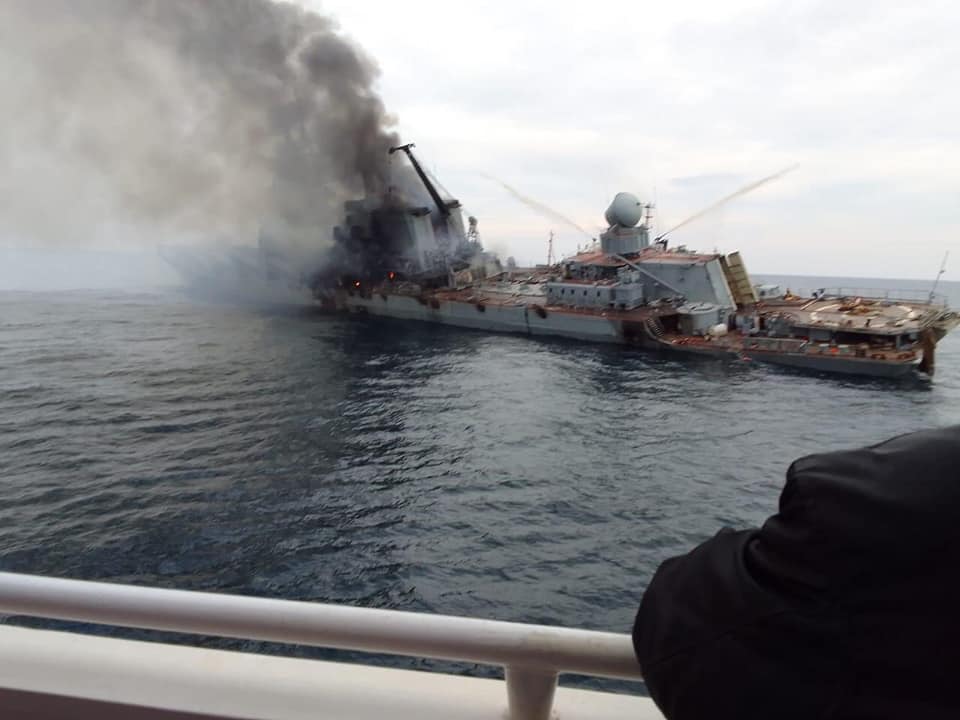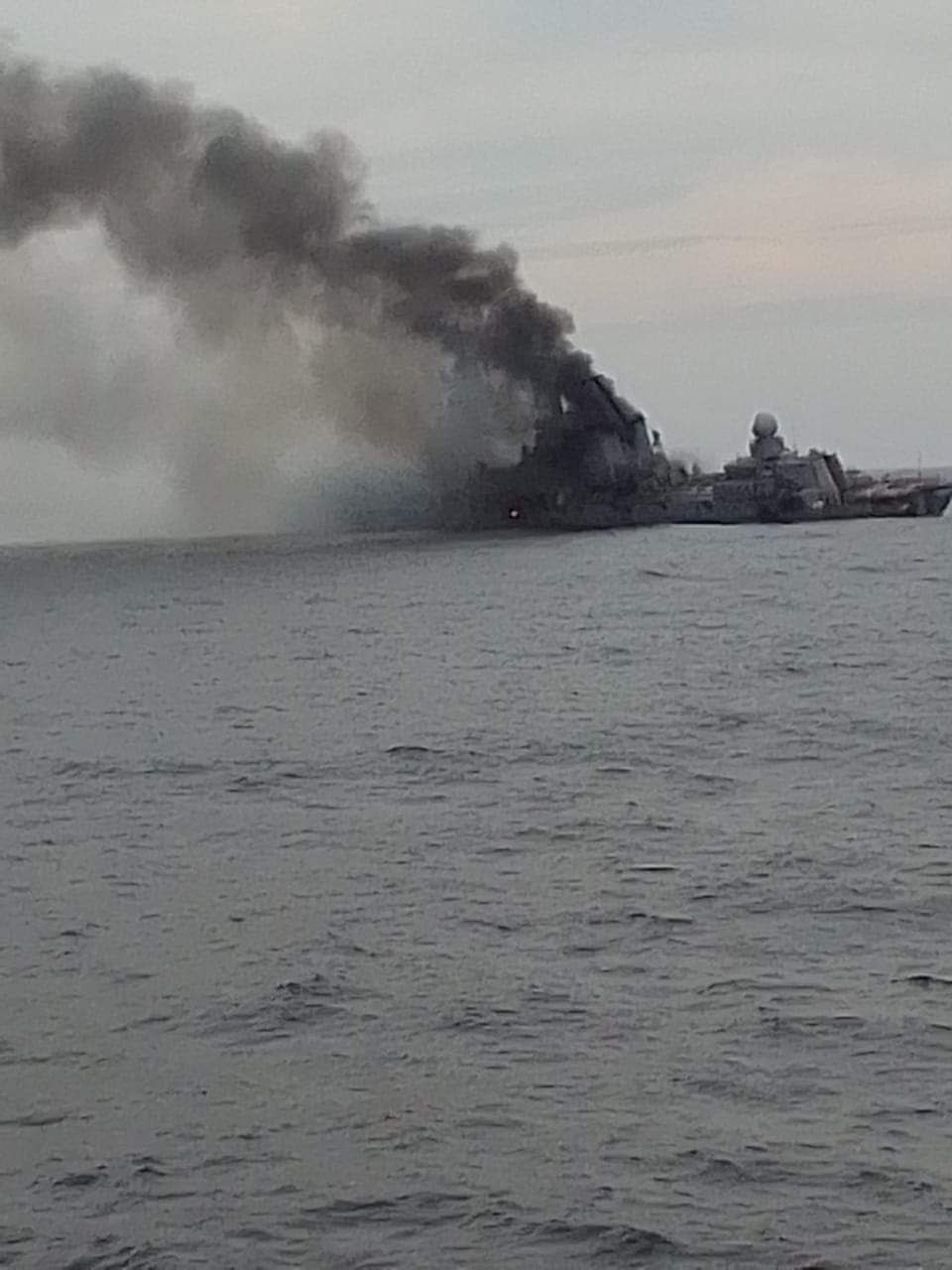There's a couple pictures now floating around (excuse the pun) of supposedly the Moskva after getting hit:
==================
Assuming they are legit photos, there are a few observations:
1) The life raft canisters are missing, indicating that she has been abandoned;
2) The hangar doors are open, which suggests that her helicopter was flown off and the air department left with it (or very shortly thereafter)
3) There are several roughly circular areas of discoloration which appear to correspond with the location of portholes on the main deck, probably from smoke escaping from those portholes. There is another area of discoloration at the end of the forecastle deck abeam the hangar, indicating that smoke escaped from the main deck there too
4) The main fire is obviously in the vicinity of the stacks and the bridge. There is what may be evidence of a missile hit near the waterline in this area. Note that there are no portholes that correspond with the discoloration on the hull here, suggesting internal fires and/or missile damage. This is about where one would expect a radar-homing anti-ship missile to impact - near the center of the target, where the superstructure creates the biggest radar picture.
5) The list is probably due at least in part to firefighting water collecting inside the ship. This is a common occurrence in shipboard fires and may have contributed to the ultimate loss of the ship, perhaps via the free surface effect. The missiles may have caused some flooding, particularly if they struck near the waterline, but firefighting efforts concentrated on the port side likely caused water to collect on that side.
There are more portholes on the second deck aft below the knuckle in the ship's side, some of which are barely visible and are awash due to the list. Water entering through these portholes could contribute to the list, she does not appear to have any appreciable
trim by the stern.
Possible course of events from these observations:
A) The missile or missiles hit Moskva between the forward superstructure and the stacks, just abaft the forward missile batteries. These hits ignited a major fire in the vicinity of the uptakes that forced her main machinery to shut down, leaving her reliant on emergency diesel generators for power.
B) Firefighting efforts by her crew and other ships caused her to take on a list to port. With much of the upper portion of the ship filled with smoke, no propulsion, and fires threatening the missile magazines, she was abandoned.
C) The fires were eventually brought under control and the ship was taken in tow, but firefighting water accumulating on the port side pulled the holes made by the missiles and the lower row of portholes below the waterline, leading to additional flooding high in the ship, exacerbating the list and reducing her margin of stability.
D) Eventually she sank either due to progressive flooding or perhaps free surface effect causing a sudden loss of stability and capsizing.
Comments, corrections, analysis and counter-analysis welcome (assuming these pictures are legitimate).
@Anmdt @MisterLike et al.
 )
)





